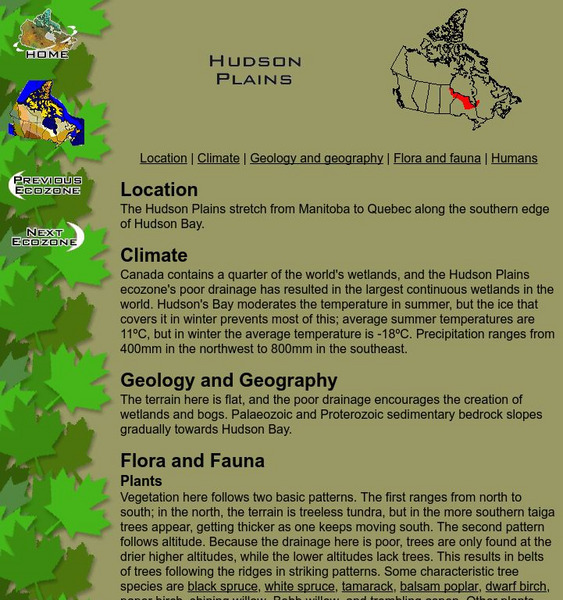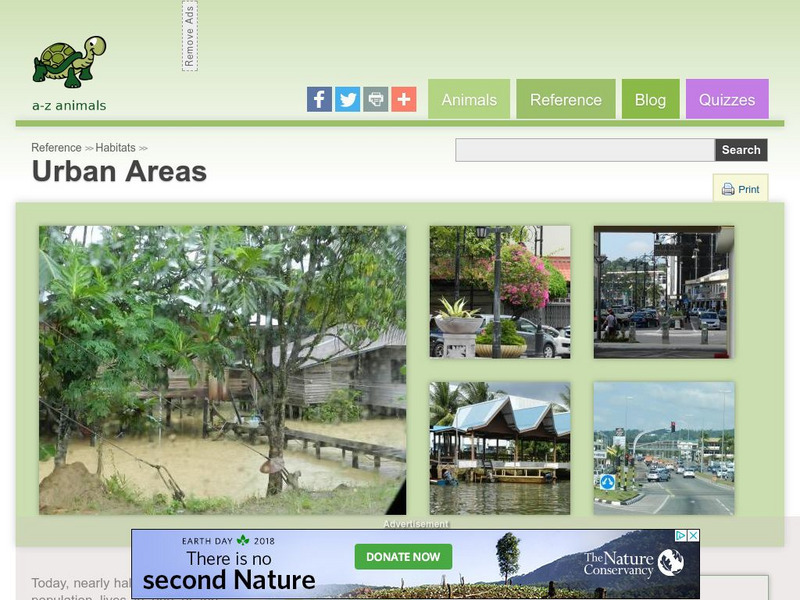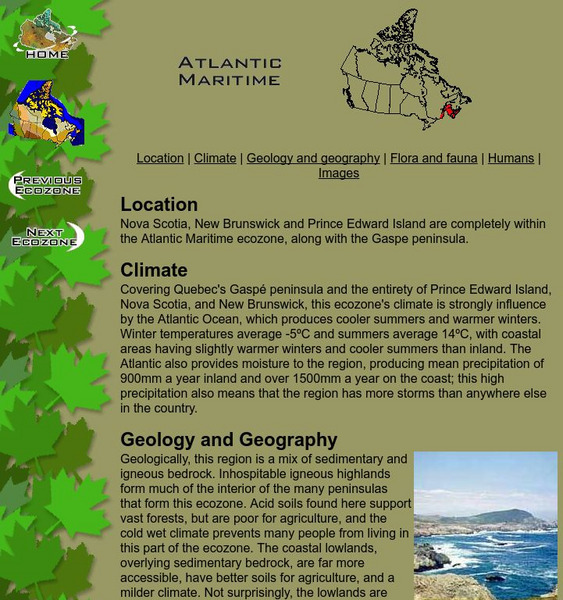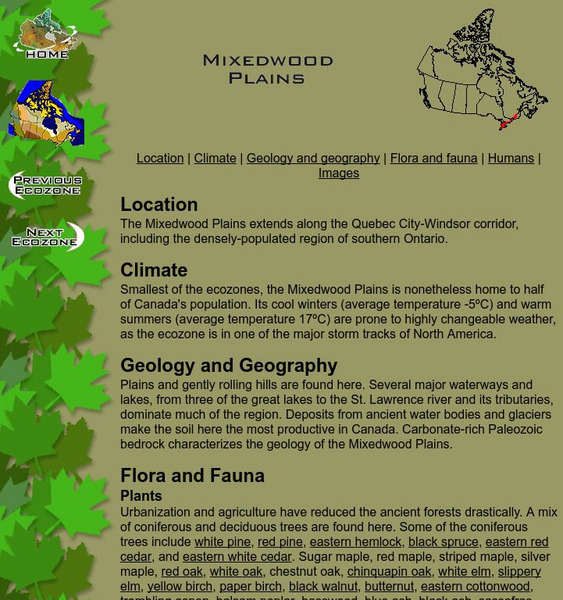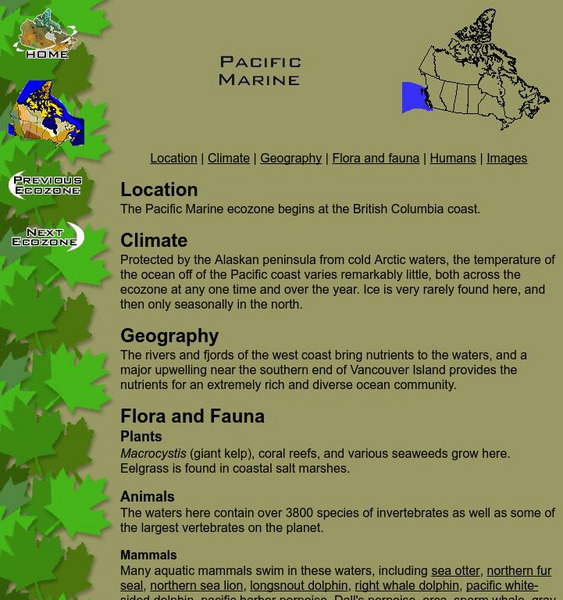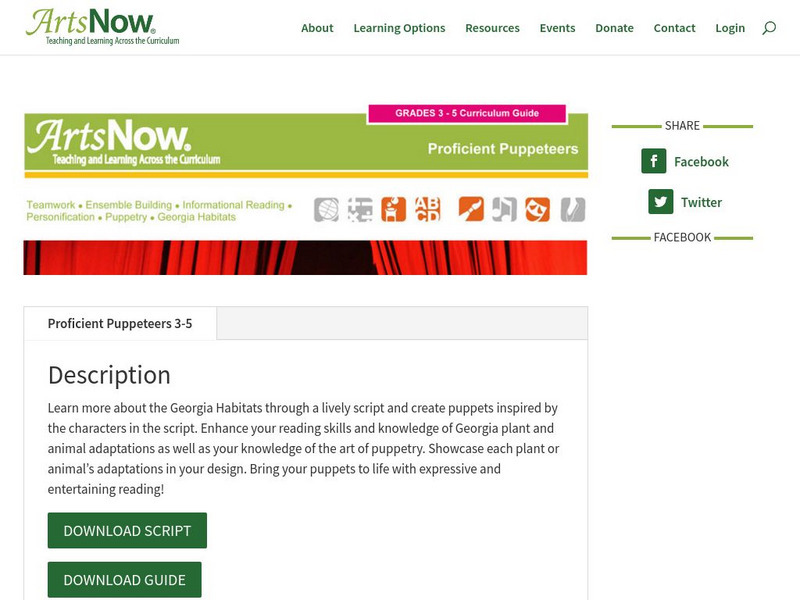McGill University
Mc Gill University: Canadian Biodiversity: Ecozones: Hudson Plains
The Hudson Plains ecozone stretches from Manitoba to Quebec along the southern edge of the Hudson Bay. This is a brief, concise, description of the location, climate, geology and flora and fauna. It includes a collection of images of the...
McGill University
Mc Gill University: Canadian Biodiversity: Ecozones: Northwest Atlantic Marine
The Northwest Atlantic Marine ecozone begins in the Gulf of St. Lawrence and extends to the southeastern end of Baffin Island. This is a brief, concise description of the location, climate, geology, and flora and fauna. It includes some...
A-Z Animals
A Z Animals: Reference: Habitats: Urban Areas
Find out how urban ecosystems sustain plant life and wildlife.
McGill University
Mc Gill University: Canadian Biodiversity: Ecozones: Atlantic Maritime
This Atlantic Maritime ecozone includes Nova Scotia, New Brunswick, and Prince Edward Island. This brief, concise description includes a collection of images of the animals and birds native to the location. Many of the images include...
McGill University
Mc Gill University: Canadian Biodiversity: Ecozones: Boreal Cordillera
This Boreal Cordillera contains the mountains of the southern Yukon and northern British Columbia . This brief, concise description includes a collection of images of the animals and birds native to the location. Many of the images...
McGill University
Mc Gill University: Canadian Biodiversity: Ecozones: Mixedwood Plains
This Mixedwood Plains ecozone extends along the Quebec City- Windsor corridor and the densely-populated region of Southern Ontario. This brief, concise description includes a collection of images of the animals and birds native to the...
McGill University
Mc Gill University: Canadian Biodiversity: Ecozones: Atlantic Marine
The Atlantic Marine ecozone is located father out to sea and touches land at the southern coast of New Brunswick and Nova Scotia and the eastern coast of Nova Scotia and Newfoundland. This brief, concise description includes a collection...
McGill University
Mc Gill University: Canadian Biodiversity: Ecozones: Boreal Shield
The Boreal Shield runs from Alberta to Newfoundland. This is a brief, concise description of the location, climate, geology and flora and fauna. It includes a collection of images of the landscape as well as those of animals and birds...
McGill University
Mc Gill University: Canadian Biodiversity: Ecozones: Pacific Marine
The Pacific Marine ecozone begins at the British Columbia Coast. This is a brief, concise description of the location, climate, geology and flora and fauna. It includes some images of the animals and birds native to the location. Many of...
TeachEngineering
Teach Engineering: Biodomes
Students explore the biosphere's environments and ecosystems, learning along the way about the plants, animals, resources and natural cycles of our planet. Over the course of lessons 2-6, students use their growing understanding of...
Wonderville Media
Wonderville: Ocean Habitats
Habitats are places where plants and animals live. There are many different habitats in the oceans of the world. Every plant and animal in the ocean prefers a particular habitat. Learn about Ocean Habitats in this well-constructed...
Environmental Education for Kids
Eek!: Habitats
Take a look at some of the different habitats that are home to many plants and animals including black bears, owls and various species of birds.
PBS
Pbs: Biogeography Polar Bears and Penguins
From the Evidence for Evolution Library at PBS, this is a short article about biogeography. The distribution of animals is one source of evidence for Darwin's descent with modification.
The Wild Classroom
The Wild Classroom: Biomes of the World: Tropical Rainforest Biome
Learn all about the Tropical Rainforest biome. Learn where rainforests are found, what defines a rainforest, layers in the rainforest, and plants and animals of the rainforest. See 2 videos about the rainforest.
Utah Education Network
Uen: Utah's Plants and Animals Do You Know Where I Live?
Can you figure out what types of biomes different organisms belong in? You'll be presented with a variety of organisms and asked which of three biomes they belong in.
Songs for Teaching
Songs for Teaching: Biomes
Use this site to see how many of the animals and plants that your students can remember from each biome after listening to this song.
McGill University
Mc Gill University: Canadian Biodiversity: Ecozones: Boreal Plains
The Boreal Plains are located in the center of Alberta and extend into Saskatchewan and Manitoba. This is a brief, concise description of the location, climate, geology and flora and fauna. It includes a collection of images of the...
McGill University
Mc Gill University: Canadian Biodiversity: Ecozones: Prairies
This Prairies ecozone covers southern Alberta, Saskatchewan, and Manitoba. This brief, concise description includes a collection of images of the animals and birds native to the location. Many of the images include descriptions.
Missouri Botanical Garden
Missouri Botanical Garden: What's It Like Where You Live?
Learn about each biome with this site. Site will give you information about the plants, animals, and the climate found at each biome.
ArtsNow
Arts Now Learning: Proficient Puppeteers
In this lesson, students create puppets for the characters in a Reader's Theater script called 'Georgia State Animals & Plants: Habitats and Adaptations.' The puppets showcase the adaptations for each plant or animal. Students then...
Polk Brothers Foundation Center for Urban Education at DePaul University
De Paul University: Center for Urban Education: Prairie Changes [Pdf]
"Prairie Changes" is a one page, nonfiction passage about the changes in the prairie over time and the effect it has on plants, animals, and habitats. It is followed by an open-ended question which requires students to provide evidence...
Other
Rainforest Alliance: Species Profiles
This resource has rain-forest species profiles for amphibians, birds, mammals, insects, and plants. Each profile explains the organism's anatomy, habitat, diet, and threats.
Thomas Jefferson National Accelerator Facility
Jefferson Lab: Where Plants and Animals Live
Read and fill in the blanks of this passage explaining habitats where plants and animals live. Each blank has a dropdown menu with choices. When you finish, click CHECK MY ANSWERS. If you pick a wrong answer, the right answer will be...
ClassFlow
Class Flow: Habitats
[Free Registration/Login Required] Through this unit, children will begin to understand the concept of a habitat, how it provides organisms found there with conditions for life and how animals depend on plants or other animals which eat...
